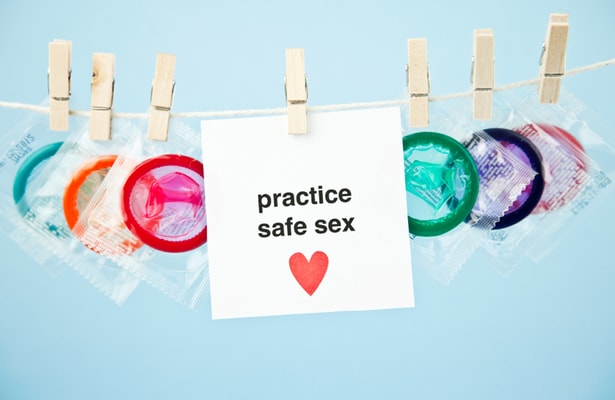
How many of you remember your sex education classes from high school? Maybe they were called “health”. I certainly do, as it was taught during Physical Education. The girls and boys were separated into different groups, and we learned about sexually transmitted diseases, or STD’s as they were called then. Now known as STI’s, they were just as horrible to hear about back then, as they are today. But that was the extent of it for me. Honestly, I had to learn everything else on my own, so to speak. The STI lesson was just a scare tactic, but it leads me to wonder what kids are/were taught about sex. And what kind of myths were spread?
Between 1996 and 201, the federal government dedicated $1.5 billion to sex education promoting abstinence. Some abstinence-only curricula didn’t even mention contraception at all, while others were permitted by state laws to only mention failure rates without any discussion of benefits. Which means, kids were being told to abstain from sex without being given any tools or resources on what to do if they didn’t abstain. This seems ridiculous to me. I mean, think about it – teen pregnancy or using a condom. What’s worse? But here are the facts.
Condoms Do Not Have Abysmal Failure Rates
There is no birth control method that is perfect, so it’s fair to talk about failure rates. You might have heard that condoms have a failure rate of around 18%, but that doesn’t mean what you think it means. There are two different kinds of failure rates for birth control: perfect use, where you use the method consistently and correctly, and typical use, which is the number you get when you intend to use the method, but maybe don’t follow through all the time.
Condoms have a typical use failure rate of 18%, which means that 18% of heterosexual couples who use condoms will end up with a pregnancy after using them for a year. With perfect use, though, that rate is only 2%. If your teacher is telling you that abstinence is 100% effective, understand that, if used properly, condoms are 98% effective.

Condoms Don’t Break or Slip Very Often
It is easy to assume that condoms fail by breaking, slipping off or by not putting up an effective barrier against sperm of diseases. Condoms break or slip off between 1.6% and 3.6% of the time. It sucks when it happens, but it’s not as catastrophic as your sex ed teachers would have you believe. If you Google “condom breakage” you will see a 40% breakage rate. But if your condom is breaking 4 out of 10 times that you use it, you’re using it wrong.
The most common errors include: not using condoms throughout sex, not leaving space at the tip, not squeezing air from the tip, putting the condom on upside down, not using water-based lubricants and incorrect withdrawal. I kind of laughed at the upside down remark, but I guess I shouldn’t. But again, condoms don’t work well, if you don’t use them at all, or even properly.
Even if the Condom Breaks, You Will Not Automatically Get Pregnant
That 2 or 18% failure rate is in heterosexual couples who use (or intend to use) condoms for a full year. It doesn’t mean that you have an 18% chance on any given day. Some teachers have their students roll a dice, and if your number comes up, your condom “failed” and you get a baby. But that’s not how it works in the real world. In fact, without any birth control at all, your chances of getting pregnant are between 0 and 10% depending on where you are in your cycle. And this is assuming that you don’t have any fertility issues. Which most of us don’t realize until we’ve spent years trying not to get pregnant. Only to find out that we can’t. Sigh.
Condoms Are Not Full of Tiny Holes
Some sex ed classes teach that viruses like HIV are small enough to pass through microscopic pores in condoms. Which is completely false as there aren’t any microscopic pores in condoms. And if there were, more people would have HIV or be pregnant, and the whole condom industry would go under.
In fact, people who use condoms are 80% less likely to contract HIV than people who don’t. But that doesn’t mean condoms fail 20% of the time, just that this is a typical use rate. People forget to wear condoms, and people are exposed to HIV in other ways, outside of having sex.
All of this means is that you need to understand how condoms and birth control in general work. You also need to understand how sex works. I mean, if you’re not doing it right, you’re likely to run into problems. Size of condom makes a difference in some case as well. If you’re wearing one that’s too small, it could come off more than the average percentage. Know your body, and understand what to do. Condoms are the best way to protect yourself against STI’s, and an extremely effective method to protect yourself against unwanted pregnancy. The more you know!




